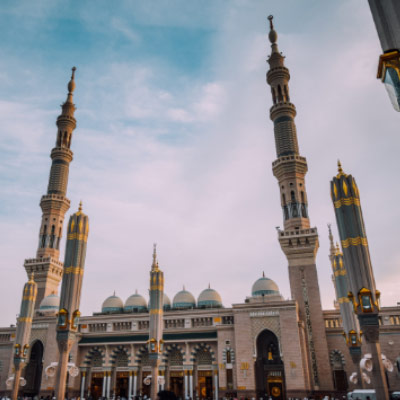Saudi Arabia
About Country
Saudi Arabia
Saudi Arabia's Geographical Location and Population Composition
Saudi Arabia, situated on the Arabian Peninsula, occupies a strategically significant geographical position and boasts a diverse population. It shares its borders with Jordan and Iraq to the north, and to the east, it adjoins Kuwait, Qatar, Bahrain, and the United Arab Emirates. To the southeast, it borders Oman, while Yemen lies to the south.
The population of Saudi Arabia is predominantly Arab, yet it includes various ethnic groups and a substantial expatriate community. Riyadh, the capital city, stands as the largest urban center, with Jeddah and Dammam as other major cities, each hosting significant populations.
Saudi Arabia's strategic location has historically positioned it as a vital center for trade, commerce, and religious pilgrimage due to its status as the birthplace of Islam. Geographically, the country encompasses vast deserts, notably the Rub' al Khali, and features a breathtaking Red Sea coastline, offering a rich diversity of landscapes and opportunities for exploration. This, combined with its profound religious significance, cultural heritage, and modern infrastructure, renders Saudi Arabia a multifaceted destination for travelers.
Climate conditions and tourism situations in different seasons
Saudi Arabia experiences a range of climates and seasons, providing unique attractions throughout the year.
Winter, spanning from November to February, offers the most pleasant weather, characterized by mild temperatures that make it perfect for outdoor activities. Historical sites in Diriyah and the vibrant city of Riyadh are delightful to explore.
Spring, from March to May, presents moderate weather and is an ideal time to visit the Al Khobar Corniche or the captivating Asir Province, known for its stunning mountains and terraced farms.
Summer, taking place from June to August, is intensely hot in most regions. Nevertheless, the coastal cities like Jeddah provide relief with milder weather, offering a great opportunity for water sports along the Red Sea coast.
Autumn, running from September to November, marks the beginning of the pleasant season. This is the perfect time to explore the Nabatean tombs in Al-Ula or the UNESCO World Heritage site of Madain Saleh.
Saudi Arabia's diverse seasons ensure there's something for everyone, from historical and cultural experiences to outdoor adventures and natural beauty.
Saudi Arabia's Cultural Cities
Saudi Arabia's major cities provide a fusion of cultural and historical attractions for travelers.
Riyadh, the capital, is home to the King Abdulaziz Historical Center, which houses the National Museum and the Masmak Fortress. The ancient Diriyah district is a reflection of the country's heritage.
Jeddah, a coastal city, features the historical district of Al-Balad with its traditional coral houses, the King Fahd Fountain, and the Corniche.
Mecca, the holiest city in Islam, hosts the Kaaba and the Grand Mosque, drawing millions of pilgrims annually.
Medina, another significant Islamic city, houses the Prophet's Mosque and the Quba Mosque, both deeply revered by Muslims.
These cities offer cultural and spiritual experiences, from historical sites to religious landmarks, showcasing the rich cultural and religious heritage of Saudi Arabia.
Saudi Arabia's Natural Attractions
Saudi Arabia's natural attractions are as diverse as they are breathtaking. The Red Sea coastline, especially in destinations like Jeddah and Al Khobar, offers stunning coral reefs for diving and snorkeling enthusiasts.
The Empty Quarter, Rub' al Khali, stands as the world's largest continuous sand desert, drawing desert explorers and adventure seekers.
The Asir National Park, in the southwestern mountains, provides lush landscapes, serene valleys, and exceptional trekking opportunities.
Al-Ula's Madain Saleh, a UNESCO World Heritage site, is a treasure trove of archaeological wonders amidst stunning rock formations.
The Farasan Islands in the Red Sea are a hidden gem for nature lovers, known for their pristine beaches and bird-watching opportunities.
These natural wonders in Saudi Arabia offer a diverse range of outdoor adventures, from coastal explorations to desert escapades and mountain hikes.
Saudi Arabian Food
Saudi Arabian cuisine is a flavorful adventure for tourists, offering a fusion of tastes and traditions deeply rooted in the culture. Kabsa, the national dish, features fragrant rice cooked with spices and various meats, often garnished with nuts and raisins.
Mandi is another crowd-pleaser, with tender, slow-cooked meat served atop aromatic rice. Arabian flatbreads, like Murtabak and Samboosa, are popular street foods.
Visitors can savor fresh seafood along the coasts, where dishes like Sayadieh and Jareesh, a type of porridge, are common.
Arabic coffee and dates are customary symbols of hospitality, and the tradition of sharing food is an integral part of the experience, offering tourists a warm glimpse into the rich Saudi culture.
The diverse and savory offerings make Saudi Arabian cuisine a captivating aspect of any trip, catering to a range of tastes and culinary interests.


